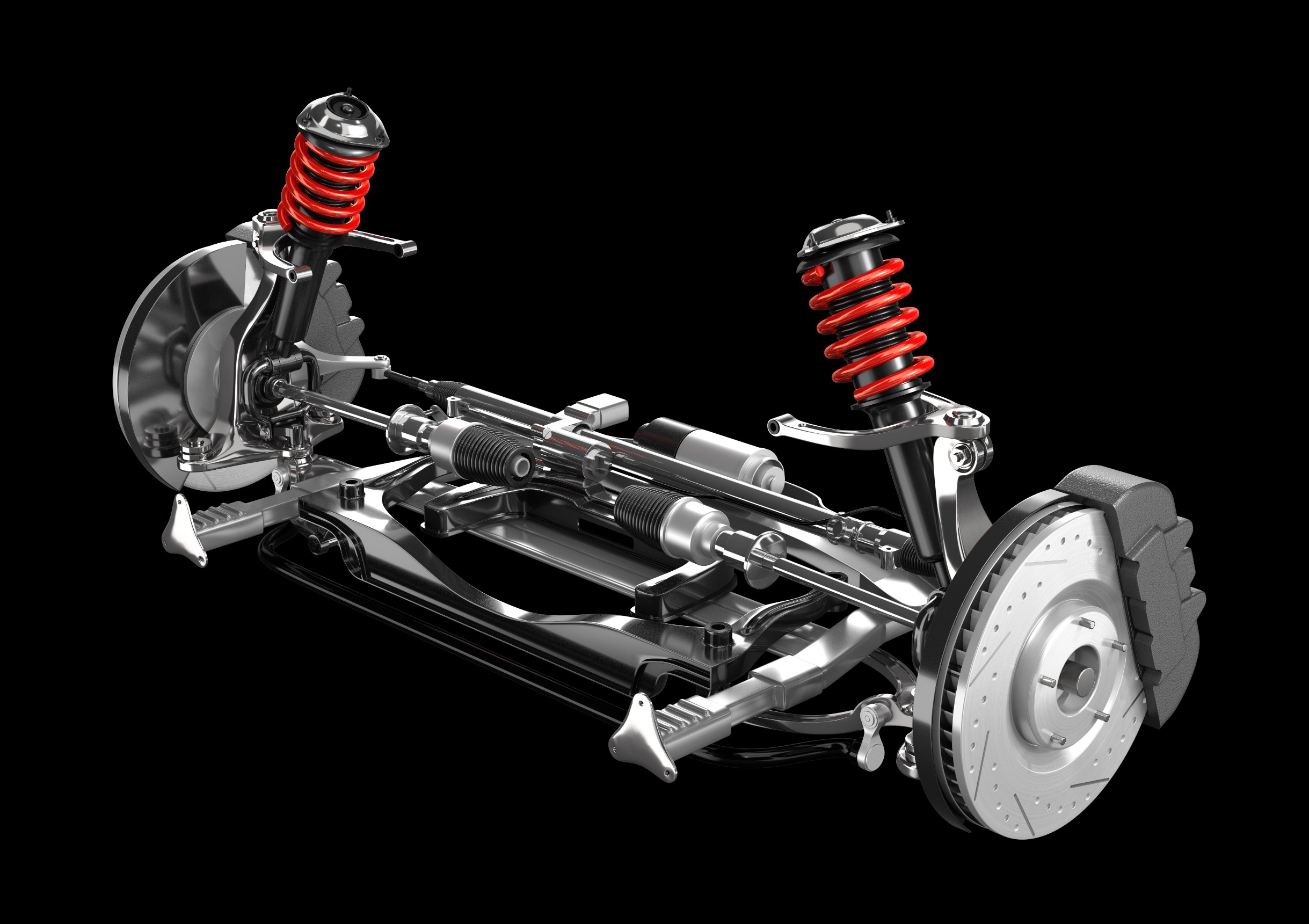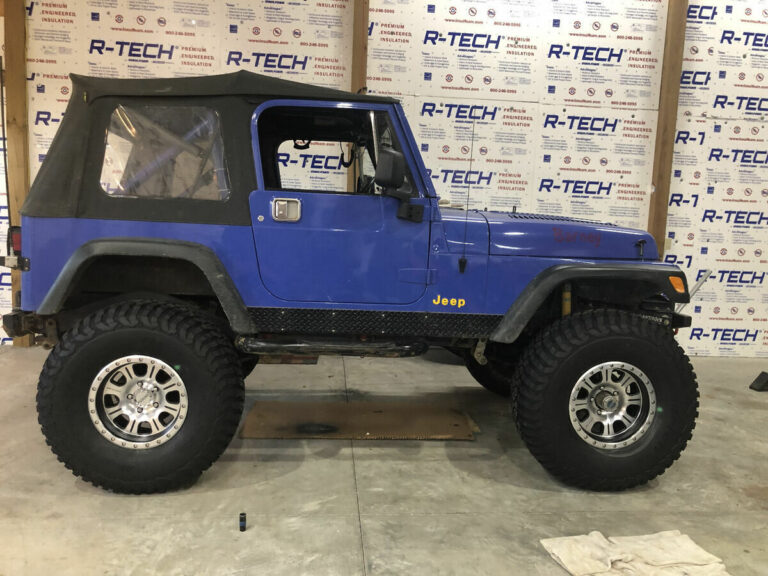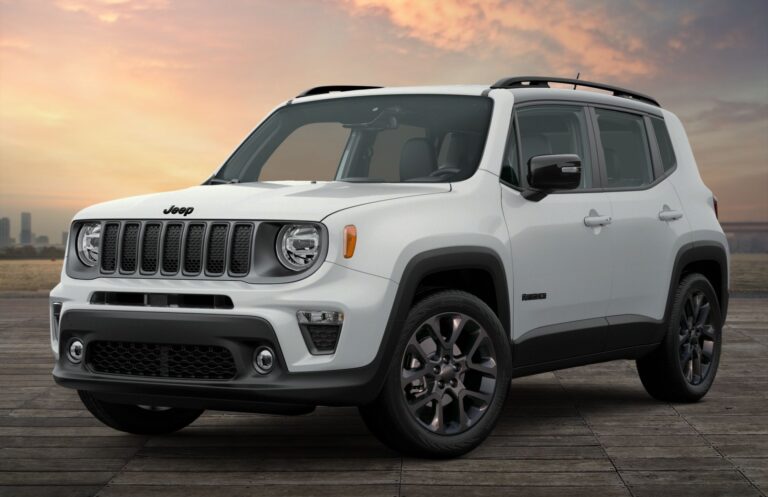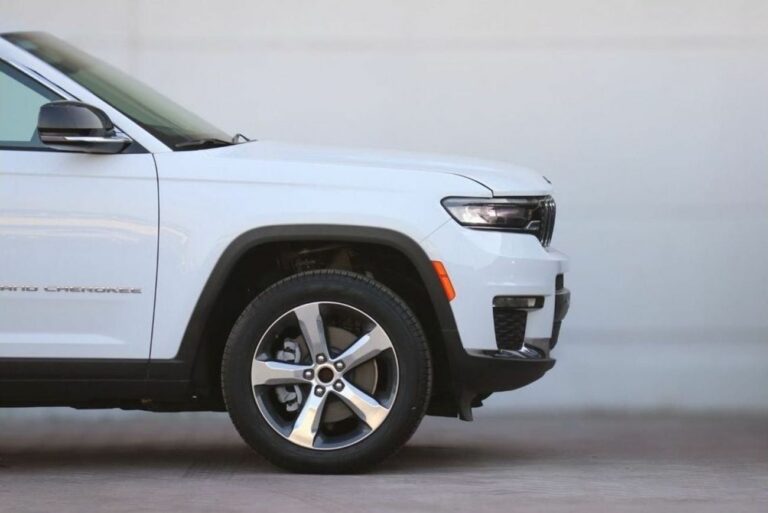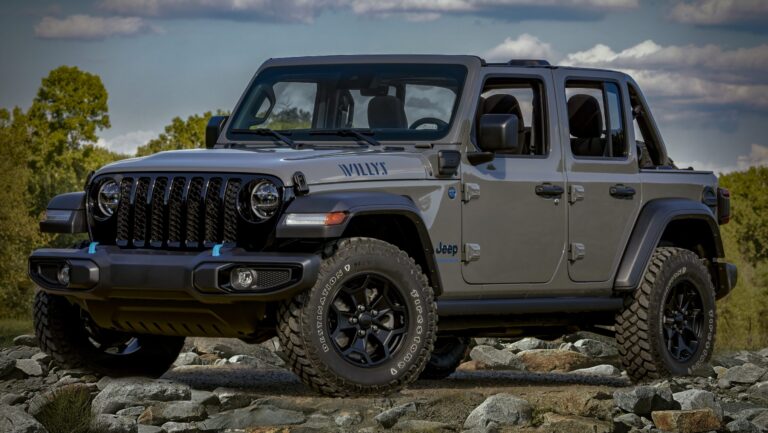Suspension Lifted Jeep For Sale: Your Ultimate Guide to Finding the Perfect Off-Road Machine
Suspension Lifted Jeep For Sale: Your Ultimate Guide to Finding the Perfect Off-Road Machine jeeps.truckstrend.com
The roar of an engine, the glint of sunlight off a rugged exterior, and the undeniable presence of a vehicle ready to conquer any terrain – this is often the image that comes to mind when one thinks of a Jeep. But for many enthusiasts, a stock Jeep isn’t enough. They crave more ground clearance, larger tires, and an even more commanding stance. This desire leads them to the world of "Suspension Lifted Jeeps For Sale," a specialized segment of the automotive market brimming with adventure and capability.
A suspension lifted Jeep is a vehicle that has undergone a significant modification to its suspension system, raising the entire chassis higher off the ground. This modification isn’t just for aesthetics; it dramatically enhances the vehicle’s off-road prowess, allowing it to navigate more challenging obstacles, ford deeper waters, and tackle steeper inclines with greater ease. For those seeking to embrace the full potential of Jeep ownership, understanding and navigating the market for a suspension lifted Jeep is crucial. This comprehensive guide will equip you with the knowledge to make an informed purchase, ensuring your next adventure starts on the right foot – or rather, on the right set of lifted wheels.
Suspension Lifted Jeep For Sale: Your Ultimate Guide to Finding the Perfect Off-Road Machine
Why Buy a Suspension Lifted Jeep? The Allure of Elevated Capability
The decision to purchase a suspension lifted Jeep often stems from a blend of practical benefits and an undeniable aesthetic appeal. Here’s why these modified machines capture the hearts of so many:
- Enhanced Off-Road Capability: This is the primary driver. A suspension lift increases ground clearance, allowing the Jeep to pass over rocks, logs, and uneven terrain without scraping its undercarriage. It also improves approach, departure, and break-over angles, meaning you can climb steeper obstacles and descend more aggressively without getting hung up.
- Accommodates Larger Tires: Lifts are essential for fitting bigger, more aggressive off-road tires. Larger tires provide increased traction, a larger contact patch, and often more robust sidewalls, all crucial for navigating challenging trails.
- Improved Articulation: Quality suspension lifts often allow for greater wheel articulation, meaning the wheels can move independently over a wider range, keeping more tires on the ground for better traction when traversing highly uneven surfaces.
- Commanding Presence and Aesthetics: There’s no denying the visual impact of a lifted Jeep. Its elevated stance, aggressive tires, and rugged appearance make it stand out from the crowd, exuding an aura of adventure and capability.
- Better Visibility: The higher driving position offers a better vantage point, not just on the trail but also in everyday driving, providing a more commanding view of the road.

Understanding Suspension Lifts: What You Need to Know
Before diving into the market, it’s vital to grasp the basics of suspension lifts. Not all lifts are created equal, and understanding the differences will help you assess a potential purchase.
Unlike a "body lift," which merely raises the body from the frame and offers no ground clearance benefits, a suspension lift directly modifies the components that connect the axles to the chassis. This truly lifts the vehicle’s frame and drivetrain higher.
Common types of suspension lifts include:

- Spacer Lifts (Budget Boosts): These are the simplest and most affordable, using spacers placed above the coil springs or under the strut assembly. They offer a modest lift (typically 1-2.5 inches) and maintain the factory ride quality but don’t enhance suspension travel or articulation significantly.
- Coil Spring Lifts: These replace the factory coil springs with taller, often stiffer, aftermarket springs. They can provide lifts from 2.5 inches to 4 inches or more, improving ground clearance and allowing for larger tires. Often, new shocks are included or recommended.
- Short Arm Lifts: These kits replace coil springs, shocks, and often include new control arms and track bars. They offer substantial lifts (3-4 inches) and improved articulation over stock, making them popular for serious off-roading.
- Long Arm Lifts: Designed for extreme off-road use, long arm kits relocate the control arm mounting points further back on the frame, using much longer control arms. This provides superior articulation, better ride quality (especially over rough terrain), and reduced driveline angles for very tall lifts (4+ inches). They are significantly more complex and expensive.
- Coilover Systems: The most advanced and expensive option, these replace traditional springs and shocks with integrated coilover units, often adjustable. They offer unparalleled performance, articulation, and ride tuning capabilities for serious competition or extreme rock crawling.

When inspecting a lifted Jeep, identify the type of lift installed and research the brand. Reputable lift manufacturers like TeraFlex, BDS Suspension, MetalCloak, AEV, Rough Country, and Old Man Emu are known for quality and engineering.
Key Considerations When Buying a Suspension Lifted Jeep
Purchasing a modified vehicle requires a more discerning eye. Here are critical factors to weigh:
- Your Intended Use: Will it be a daily driver, a weekend warrior, or a dedicated rock crawler? A mild lift (2-3 inches) with good quality components might be perfect for daily driving and light trails. For hardcore off-roading, a 3.5-inch to 4.5-inch lift with long arms and reinforced axles might be necessary. Over-lifting for your needs can lead to compromised on-road handling and increased wear.
- Lift Quality and Components: A cheap lift can cause more problems than it solves. Look for quality shocks (e.g., Fox, Bilstein, King), robust control arms, adjustable track bars, and proper bump stops. Ensure all necessary components (extended brake lines, driveshafts, steering correction) were installed.
- Associated Modifications: A lift often necessitates other upgrades:
- Tire Size: What size tires are on it, and are they appropriate for the lift height?
- Gearing: Larger tires effectively change the final drive ratio, making the Jeep feel sluggish. Has the differential gearing been changed (re-geared) to compensate? This is crucial for performance and fuel economy.
- Driveshafts: Taller lifts can cause severe driveline angles, leading to vibrations and premature wear on U-joints or CV joints. Has a new, stronger driveshaft (e.g., 1310 or 1350 series) been installed?
- Steering Components: Has the steering been upgraded (e.g., heavy-duty tie rod, drag link, track bar)? A lifted Jeep puts more stress on steering components.
- Axle Reinforcement: For very large tires and aggressive off-roading, the axles themselves may need reinforcement (e.g., gussets, trusses) or replacement with stronger aftermarket axles.
- Maintenance and Wear: A lifted Jeep, especially one used off-road, will experience increased wear on certain components (ball joints, U-joints, bushings, wheel bearings). Ask for maintenance records. Inquire about the last time suspension components were serviced or replaced.
- Legality and Insurance: Check local laws regarding maximum lift height and tire coverage. Some states have strict regulations. Inform your insurance company about the modifications; failure to do so could jeopardize coverage in an accident.
- Pre-Purchase Inspection: This is non-negotiable. Have a qualified mechanic, preferably one specializing in off-road vehicles, inspect the Jeep thoroughly. They can identify potential issues with the lift, driveline, steering, and overall vehicle condition.
Where to Find Suspension Lifted Jeeps For Sale
The market for lifted Jeeps is diverse. Here are common avenues:
- Specialty Off-Road Dealerships: Some dealerships specialize in selling new and used modified Jeeps. They often have experienced staff and can offer financing and warranties.
- Private Sellers (Online Marketplaces): Websites like Craigslist, Facebook Marketplace, and dedicated Jeep forums (e.g., JK-Forum, JLWranglerForums, JeepGarage) are popular. You might find better deals but exercise caution and always inspect the vehicle thoroughly.
- Used Car Dealerships: Standard used car lots may have lifted Jeeps, but their knowledge of the modifications might be limited.
- Auctions: Government or public auctions occasionally feature Jeeps, but buying here is higher risk as inspections are often limited.
- Specialty Off-Road Shops: Some custom shops that perform lifts also sell pre-owned lifted Jeeps that they have worked on or traded in.
Tips for Inspecting a Lifted Jeep
A meticulous inspection is key to avoiding costly post-purchase surprises.
- Exterior and Body: Look for rust, especially on the frame, underbody, and around suspension mounting points. Check for body damage, dents, or scratches that might indicate hard off-road use.
- Suspension Components:
- Shocks: Look for leaks, dents, or rust on the shock bodies.
- Springs: Check for cracks, rust, or sagging.
- Control Arms: Inspect bushings for cracks or excessive wear. Look for bent or damaged arms.
- Track Bars: Ensure they are adjustable and properly aligned, without excessive play.
- Sway Bar Disconnects: If equipped, ensure they operate smoothly.
- Tires and Wheels: Check tire wear patterns (uneven wear can indicate alignment issues or worn components). Ensure tires are balanced and properly sized for the lift. Look for bent wheels or curb rash.
- Driveline:
- Driveshafts: Check U-joints or CV boots for tears, cracks, or excessive play. Look for signs of vibration (e.g., polished spots on the exhaust near the driveshaft).
- Differential Covers: Look for leaks or signs of impact.
- Gears: While you can’t visually inspect gears, ask about ratios and check for proper re-gearing if large tires are present.
- Steering System: With the engine off, have someone turn the steering wheel while you look at the components. Check for excessive play in the tie rod, drag link, track bar, and steering box. Signs of "death wobble" (see FAQ) are a major red flag.
- Test Drive:
- Listen for unusual noises (clunks, grinding, whines).
- Check for vibrations, especially at highway speeds.
- Evaluate steering feel: Is it loose, does it wander, or is it difficult to keep straight?
- Test brakes for proper function and pull.
- Engage 4WD to ensure it works correctly.
- Documentation: Ask for receipts for the lift kit and installation, alignment sheets, and any other modification records. This proves the work was done professionally and helps you understand the Jeep’s history.
Potential Challenges and Solutions
While owning a lifted Jeep is rewarding, be aware of common challenges:
- "Death Wobble": This violent, uncontrollable shaking of the front end, often triggered by a bump at speed, is a serious safety concern. It’s usually caused by worn or improperly adjusted steering and suspension components. Solution: Proper diagnosis and replacement of worn parts (track bar, tie rod, ball joints, control arm bushings) and professional alignment.
- Increased Wear on Components: More stress on parts means they wear out faster. Solution: Proactive maintenance, using high-quality replacement parts, and regular inspections.
- Reduced Fuel Economy: Larger tires and increased drag from the lift will impact MPG. Solution: Re-gearing helps mitigate the effect, but accept that fuel economy will be lower.
- Compromised On-Road Handling: Poorly installed lifts or cheap components can lead to wandering, vague steering, or a harsh ride. Solution: Invest in quality components, ensure proper alignment, and consider additional steering stabilization.
- Necessity for Re-gearing: If the Jeep has significantly larger tires (35 inches or more), re-gearing the differentials is almost always necessary to restore power, torque, and proper transmission shift points. Solution: Factor this cost into your budget if it hasn’t been done.
Practical Advice and Actionable Insights
- Do Your Homework: Research lift kits, reputable brands, and common issues for the specific Jeep model you’re considering.
- Set a Realistic Budget: The purchase price is just the beginning. Factor in potential post-purchase maintenance, repairs, or additional desired modifications.
- Don’t Rush: Take your time. There are many lifted Jeeps on the market. Wait for the right one that fits your needs and budget.
- Seek Expert Opinion: If you’re not an expert, bring one with you for the inspection or pay for a professional pre-purchase inspection.
- Be Wary of "Bargains": A heavily modified Jeep sold for a suspiciously low price often hides underlying issues.
Concluding Summary
Purchasing a suspension lifted Jeep is an exciting step towards unlocking unparalleled off-road adventures and owning a vehicle with a commanding presence. By understanding the different types of lifts, diligently assessing the quality of modifications, and conducting a thorough inspection, you can confidently navigate the market. Remember that a well-built lifted Jeep is a testament to thoughtful engineering and proper maintenance, offering years of reliable performance both on and off the pavement. With the right preparation, your lifted Jeep will be more than just a vehicle; it will be your ticket to exploring new horizons and making unforgettable memories.
Suspension Lifted Jeep For Sale: Illustrative Price Guide
This table provides estimated price ranges for suspension lifted Jeeps. Actual prices vary significantly based on location, mileage, specific lift kit (brand, type, height), quality of associated modifications (re-gearing, axles, driveshafts), overall vehicle condition, and market demand. These are examples and not definitive pricing.
| Jeep Model/Year Range | Lift Type/Height | Key Mods/Condition | Estimated Price Range (USD) |
|---|---|---|---|
| JK/JKU (2007-2018) | Mild (2-2.5") Spacer/Coil Spring | Good condition, quality tires, basic mods | $18,000 – $30,000 |
| JK/JKU (2007-2018) | Moderate (3-4") Coil Spring/Short Arm | Well-maintained, re-geared, aftermarket bumpers | $25,000 – $40,000 |
| JK/JKU (2007-2018) | Extensive (4"+) Long Arm/Coilover | Heavily modified, reinforced axles, premium components | $35,000 – $60,000+ |
| JL/JLU (2018-Present) | Mild (2-2.5") Spacer/Coil Spring | Newer model, low mileage, quality tires | $35,000 – $50,000 |
| JL/JLU (2018-Present) | Moderate (3-4") Coil Spring/Short Arm | Well-equipped, re-geared, advanced electronics | $45,000 – $70,000+ |
| JL/JLU (2018-Present) | Extensive (4"+) Long Arm/Coilover | High-end build, possibly with custom features | $60,000 – $90,000+ |
| Gladiator (JT, 2020-Present) | Mild (2-3") Coil Spring | Good condition, functional mods, bed accessories | $40,000 – $60,000 |
| Gladiator (JT, 2020-Present) | Moderate/Extensive (3.5"+) | Re-geared, heavy-duty suspension, armor | $55,000 – $85,000+ |
| TJ/LJ (1997-2006) | Mild (2-3") Coil Spring | Well-maintained, minimal rust, solid frame | $12,000 – $25,000 |
| TJ/LJ (1997-2006) | Moderate/Extensive (3-5") | Restored, re-geared, significant off-road upgrades | $20,000 – $40,000+ |
| YJ (1987-1995) | Spring Over Axle (SOA) or Lift Springs | Good running condition, minor rust, some upgrades | $8,000 – $20,000 |
| CJ (1976-1986) | Various Lift Types | Restored, highly customized, collector status | $15,000 – $50,000+ |
Frequently Asked Questions (FAQ) about Suspension Lifted Jeeps For Sale
Q1: Is a lifted Jeep safe for daily driving?
A1: Yes, if the lift was installed correctly using quality components and the vehicle is properly maintained. A poorly installed or cheap lift can compromise handling and safety. Always ensure proper alignment and check for common issues like "death wobble."
Q2: Does a lift affect daily driving comfort and fuel economy?
A2: A quality lift can maintain or even improve ride comfort on rough roads. However, larger, heavier tires typically result in a noticeable decrease in fuel economy due to increased rolling resistance and aerodynamic drag. Re-gearing the differentials can help mitigate the loss of power and efficiency caused by larger tires.
Q3: What is "death wobble" and how can I avoid it?
A3: "Death wobble" is a violent, uncontrollable shaking of the front end, usually occurring at highway speeds after hitting a bump. It’s a serious safety issue. It’s caused by worn or misaligned steering and suspension components (e.g., track bar, ball joints, tie rod ends, control arm bushings). To avoid it, ensure all front-end components are in good condition, the lift is properly installed, and the alignment is correct. Always have a qualified mechanic diagnose and fix it immediately if it occurs.
Q4: Do I need to re-gear my Jeep if I lift it and add larger tires?
A4: For tires 35 inches or larger, re-gearing the differentials is highly recommended, if not essential. Larger tires effectively change your final drive ratio, making the Jeep feel sluggish, increasing strain on the drivetrain, and negatively impacting fuel economy. Re-gearing restores the power, torque, and proper transmission shift points.
Q5: How much does a lifted Jeep cost?
A5: The cost varies wildly depending on the Jeep model, year, mileage, the quality and extent of the lift kit, and any additional modifications. As illustrated in the price table above, prices can range from under $10,000 for older, mildly lifted models to over $90,000 for new, extensively modified Jeeps.
Q6: Can I finance a modified or lifted Jeep?
A6: Yes, it’s generally possible to finance a lifted Jeep. Dealerships that specialize in modified vehicles are often familiar with financing options. For private sales, you might need a personal loan or secure financing through your bank or credit union. Be aware that some lenders might be hesitant if the modifications are extreme or if the vehicle’s value is unclear.
Q7: What’s the difference between a body lift and a suspension lift?
A7: A body lift uses spacers to raise the vehicle’s body from its frame, offering cosmetic height but no increase in ground clearance for the axles or differential. It’s primarily for fitting larger tires without altering suspension geometry. A suspension lift raises the entire chassis by modifying the springs, shocks, and other suspension components, directly increasing ground clearance and improving off-road capability. Suspension lifts are generally more complex and expensive but offer significant performance benefits.

